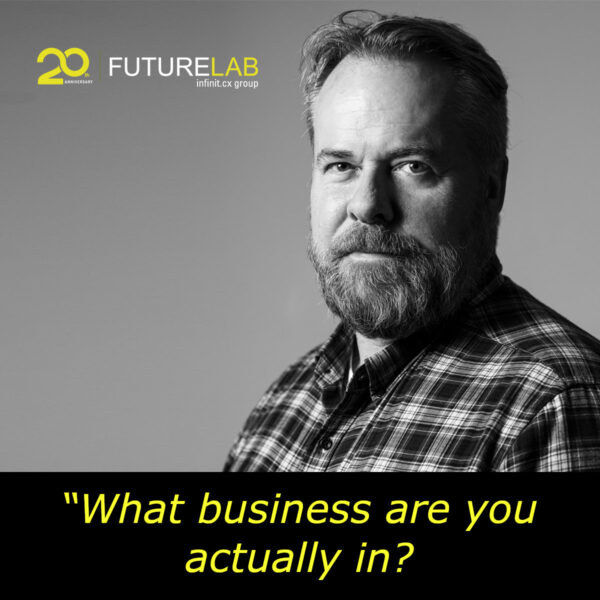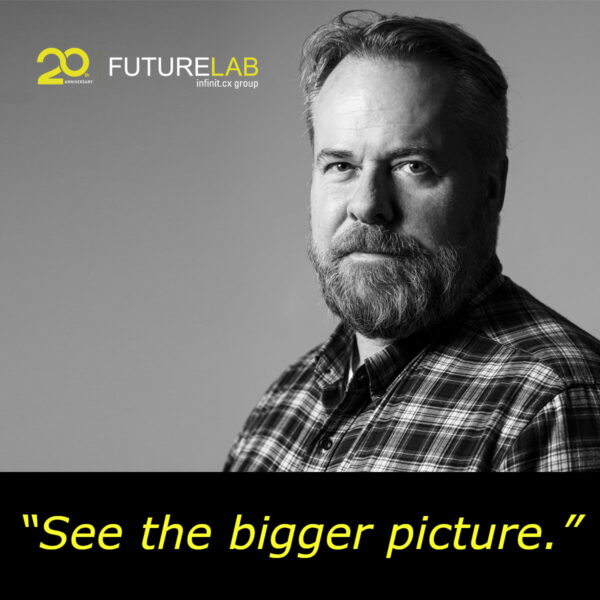“The Design of Business: Why Design Thinking is the Next Competitive Advantage,” by Roger Martin. 2009: Harvard Business Press, 190pp.
When did you read it? November 2009.
Subject: Hot on the heels of Tim Brown’s “Change by Design,” Rotman School dean Roger Martin, author of “The Opposable Mind” discusses how design thinking can help businesses balance exploration (the search for new solutions) and exploitation (extracting value from existing solutions) to improve their innovative capability.
Did you like it? How many stars would you give it (1-5)? 4
Summary: Martin describes the process of innovation in three steps, something he calls the “knowledge funnel”: (1) staring into a mystery; (2) coming up with a heuristic, or rule of thumb, that allows you to address the mystery; (3) systematizing your solution – in Martin’s words, turning the heuristic into an algorithm. This process, to Martin, is design thinking.
He spends time discussing the preference business has for reliability (i.e., consistency and repeatability) over validity (meeting a desired objective). Validity is the starting point for innovation – the discovery of something new that helps illuminate a mystery. Since validity is not predictable or repeatable, and tends to rely on qualitative, intuitive assessments (i.e., pattern matching), companies that rely on quantitative measurement struggle with it. It was easiest for me to understand validity, as Martin uses it, as a synonym for “right-brained” or “artistic.” Successful businesses balance the desire for reliability with a relentless search for new validity.
As Martin described this process – taking mysteries, developing heuristics and then refining algorithms from it, it seemed quite simple. Why doesn’t every company do this? But I also thought that there are lots of mysteries that don’t lend themselves to heuristics, and lots of heuristics that can’t turn into algorithms. There are lots of failures on the way to the next great business algorithm. Not only that, there are lots of successful businesses built on heuristics alone [for example, your favorite restaurant, assuming it’s not part of a chain]. Martin’s point, which is not stated explicitly, is that you can’t build large businesses without this transition to algorithms. You can’t have McDonald’s without a cooking and serving system. You couldn’t have Wal-mart without its distribution model.
There’s not a discussion of the cost of algorithmized businesses to society. On my last trip to downtown Boston I was hard pressed to find a business that was not part of a national chain; much different from when I Iived there in the 1990’s. But I digress – Martin isn’t writing as a social critic; he’s a business professor.
Favorite quotes:
“Vice President of Marketing” denotes a permanent position with a set of ongoing tasks…. As well suited as that construct is for running known heuristics and algorithms, it is not an effective way to move along the knowledge funnel. That activity is by definition a project; it is a finite effort to move something from mystery to heuristic or from heuristic to algorithm. pp.118-119
Designers produce prototypes for feedback, but managers are accustomed to delivering final products. p.121
Status comes from running large, high-revenue business units whose operations have been reduced to reasonably reliable algorithms that product results on time and on budget. Those are the highest goals, that is, the ones that command the highest compensation. That is why most executives prefer the known to the unknown. p.125
Was it similar to anything you have read before? Of course, there are echoes of “Change by Design” (Brown’s earlier HBR article is referenced). And the idea of “staring into mysteries” reminds me somewhat of “changing the inherent meaning of a product” from Roberto Verganti’s “Design Driven Innovation.” 2009 is definitely the year of design thinking in business!
Martin’s book is less ambitious than Verganti’s, but broader (in a good way) than Brown’s. And his ability to create a powerful, memorable metaphor remains intact (I think I’ll be using “knowledge funnel” and maybe even “validity vs. reliability” in the future).
Will this book end up on your bookshelf or in the library donation pile? The bookshelf.
Image source: http://www.flickr.com/photos/striatic/729822/
Original Post: http://caddellinsightgroup.com/blog2/2009/11/my-reading-journal-roger-martins-the-design-of-business/




